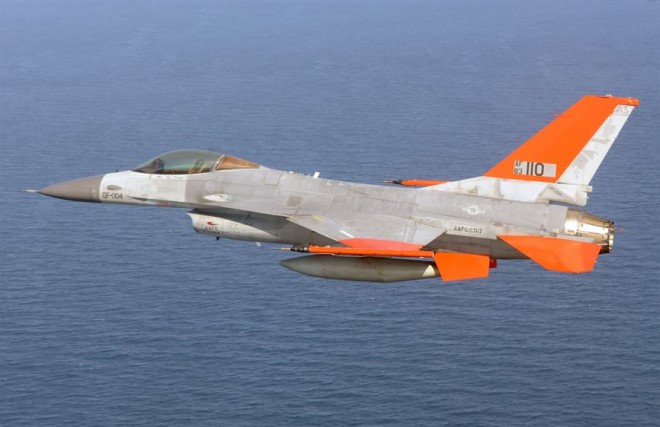
A modified F-16 took flight from Tindall Air Force Base in Florida without a pilot so it could be blown to smithereens. The Boeing retrofit of retired Lockheed Martin F-16s will be used as target practice for training situations under the name QF-16.
"The QF-16 full-scale aerial targets will be used to test newly developed weapons and train pilots for the rapidly changing nature of warfare in a safe and controlled environment," said Boeing in a statement.
"It was a little different to see an F-16 take off without anyone in it, but it was a great flight all the way around," said Lt. Col. Ryan Inman, Commander, 82nd Aerial Targets Squadron. "It's a replication of current, real world situations and aircraft platforms they can shoot as a target. Now we have a mission capable, highly sustainable full scale aerial target to take us into the future."
During last week's test, a pair of QF-16s aced taking off and landing on its own, as well as performing a series of simulated maneuvers. It also flew at 40,000 feet and broke the sound barrier at Mach 1.47.
Read the rest of this article at Wired.com



is in place. now the murders can be blamed on the machines.